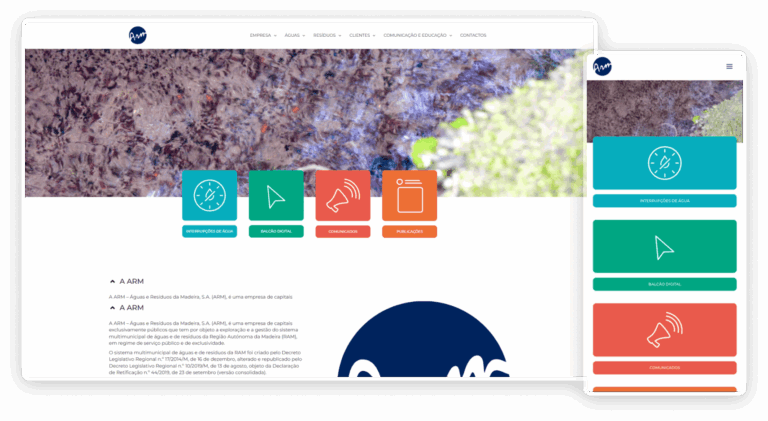Government and Public Sector

Government agencies are scrambling to figure out how to actually connect with people and earn their trust. What citizens expect today is totally different from five years ago. They want efficiency, transparency, and to understand why decisions get made, not just access to basic services.
Digital tools are finally tearing down barriers that have frustrated people for decades. No more waiting in endless lines or navigating useless phone menus.
As digital agencies modernize government or public sector websites, they help the public sector with the digital transformation, rebuilding public trust through accessible design, secure data systems, efficient maintenance, and transparent communication.
What Makes a Public Sector Website Truly Great?
A great government or public sector website puts people first by combining usability, transparency, and trust through thoughtful design and reliable technology.
Most public sector websites are mediocre, some terrible, a few exceptional. The best ones prioritize people over bureaucracy, build genuine trust, and serve everyone, not just system-savvy users.
They blend clear communication, reliable service, and authentic transparency without feeling corporate.
Here’s what sets them apart:
Mission, Values, and Governance
Clear information architecture and homepage hierarchy help users instantly understand an institution’s mission and leadership. It should be obvious within seconds of landing on the site. The organization’s goals, leadership structure, and core values need to be easily accessible. If someone has to click through five pages to figure out your mission or find out how your services can provide the information the citizen is looking for, it does not contribute to a good experience and trust of citizens in the public sector. Clarity here builds the foundation for everything else.
User-Friendly Navigation and Digital Services
Government sites used to be famous for making people want to throw their computers out the window. Good civic UX design combines simplicity, accessibility, and seamless integration with e-services, helping citizens complete tasks fast and frustration-free. The good ones now are genuinely intuitive. Renewing a license, checking a permit status, and finding contact information. These tasks should take the minimum number of clicks possible, being the number closer to zero the goal. That’s the standard we should be aiming for, and some platforms are finally getting there.
Commitment to Sustainability and Innovation
Anyone can claim they care about the environment or innovation. What actually matters is what you’re doing about it. Real environmental programs. Actual improvements in how services get delivered. Concrete projects that make operations better. And then, here’s the key part, telling people about it regularly so they can see progress happening instead of just reading vague promises on an about page. A strong CMS allows agencies to publish measurable updates and sustainability reports clearly, helping citizens track progress in real time.
Transparency and Accountability
Open data portals and plain-language dashboards can turn government websites into living transparency tools rather than static archives. You can have the best services in the world, but if people don’t trust you, none of it matters. Trust gets built when data is accessible, not hidden in some deep location that requires an unnecessary amount of time to find. When people can contact leadership without filling out forms that disappear into the void. When goals are shared in language that normal humans actually use. Governments that stop hiding behind bureaucratic jargon and start operating in the open are the ones that earn lasting trust.
Inclusivity and Equal Participation
A platform that only works well for certain groups where poorly planned. Period. Someone with limited tech experience should have just as easy a time as someone who builds websites for a living. Language barriers shouldn’t block access. Neither should disabilities or education levels. Everyone gets to participate, or the whole thing fails. Following WCAG accessibility standards ensures participation for users of all abilities and backgrounds.
Security and Privacy Best Practices
Public sector websites require secure hosting environments, GDPR-compliant forms, and clear privacy notices written in plain language. Citizens know their data has value and should be protected properly. Solid security measures and privacy policies that actually make sense are non-negotiable. But here’s what a lot of organizations miss: you can protect information AND still be approachable with a well-planned flow of information. Being secure doesn’t mean building walls around everything and making people jump through hoops to get answers.
Dynamic and Engaging Content
Static websites feel abandoned. Like someone built them in 2010 and forgot they existed. People want to see fresh content. News that’s actually new. Public notices when they’re relevant. Ways to get involved that feel current, not like leftover links from three administrations ago. Keep things moving and people stay engaged. Let your site go stale and they’ll assume everything else is stale too. Automated CMS workflows, newsletters, and multilingual content updates keep users informed and ensure platforms stay relevant.
That’s what we aim for when designing and developing government or public sector websites, digital platforms that deliver services, accountability, and trust through smart design and robust infrastructure.
The website stops being just another government obligation and becomes something people actually use and value. A real hub where they can get things done, stay informed about their community, and see their government working for them instead of despite them.
Schedule a discovery call and tell us about your project



